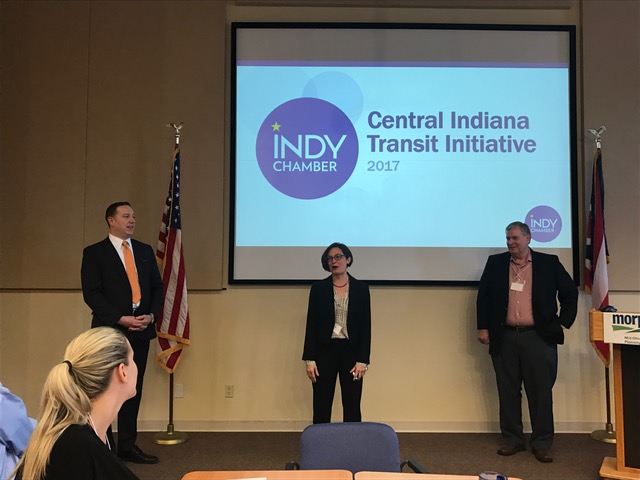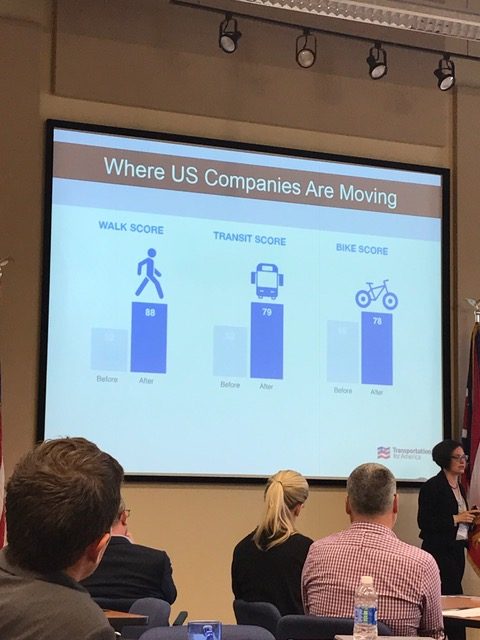
Equipping the next generation of Ohio leaders on transportation & transit

Local elected, business, and community leaders from cities across Ohio gathered last week for the first workshop of our Ohio Transportation Leadership Academy. Over the next six months, teams from across the state will learn from peer regions and transportation experts and develop their own plans to use transportation as an economic development tool in their cities.
 This Ohio-only edition in our series of leadership academies is focused on training and equipping civic leaders from multiple Ohio cities to spearhead a fresh approach to transportation that will foster sustainable economic growth and boost the economy in metro areas and the state. In a state where many cities struggle with either slow or negative population growth, the last generation’s economic development strategies are no longer delivering results. Smart investments in transit, main streets, and walkable communities are part of a new recipe for future success. The academy, co-hosted with the Greater Ohio Policy Center, includes teams from the Akron, Cincinnati, Cleveland, Delaware, and Toledo regions.
This Ohio-only edition in our series of leadership academies is focused on training and equipping civic leaders from multiple Ohio cities to spearhead a fresh approach to transportation that will foster sustainable economic growth and boost the economy in metro areas and the state. In a state where many cities struggle with either slow or negative population growth, the last generation’s economic development strategies are no longer delivering results. Smart investments in transit, main streets, and walkable communities are part of a new recipe for future success. The academy, co-hosted with the Greater Ohio Policy Center, includes teams from the Akron, Cincinnati, Cleveland, Delaware, and Toledo regions.
In this first session, participants heard from Indianapolis leaders about their recent progress using transportation as an economic development tool. Former Mayor Greg Ballard shared how he led the city to add miles of new biking and walking trails and kickstarted the development of an all-electric bus rapid transit network. Mark Fisher, Chief Policy Officer for the Indy Chamber, explained why the Indy business community was front and center in the campaign to improve public transit in order to connect workers to jobs. And Nicole Barnes, of the Indianapolis Congregational Action Network (IndyCAN) shared lessons from the grassroots, faith-based campaign to help turn out voters to successfully pass a transit funding referendum on the ballot last November that will dramatically improve bus service in the region.
Through workshop activities, participants identified specifically what success should look like for their regions and how transportation projects would help get them there. To distill that vision and think about the long-term outcomes they want, participants went through an exercise to imagine the future newspaper headlines they’d want to see written one day. “Region’s Economy Grows; Small, Minority-Owned Businesses Open at Record Pace”, “Downtown population doubles,” and “Region has a growing population, rising incomes, and less disparity” were among some of those brainstormed.
Participants see the shortcomings of their current transportation infrastructure and are focused on creative ways to make improvements including redesigning their existing transit networks, incorporating new transportation technology, building partnerships with employers to better serve trips to work, and finding new sources of local transportation funding.
We’re looking forward to the upcoming sessions of the academy where these local leaders will learn more about the best practices and emerging ideas successfully employed in peer cities across the country, become effective champions for change in their cities and be a part of expanding access to jobs and restoring walkable communities to lead to sustained economic success in Ohio’s cities.



